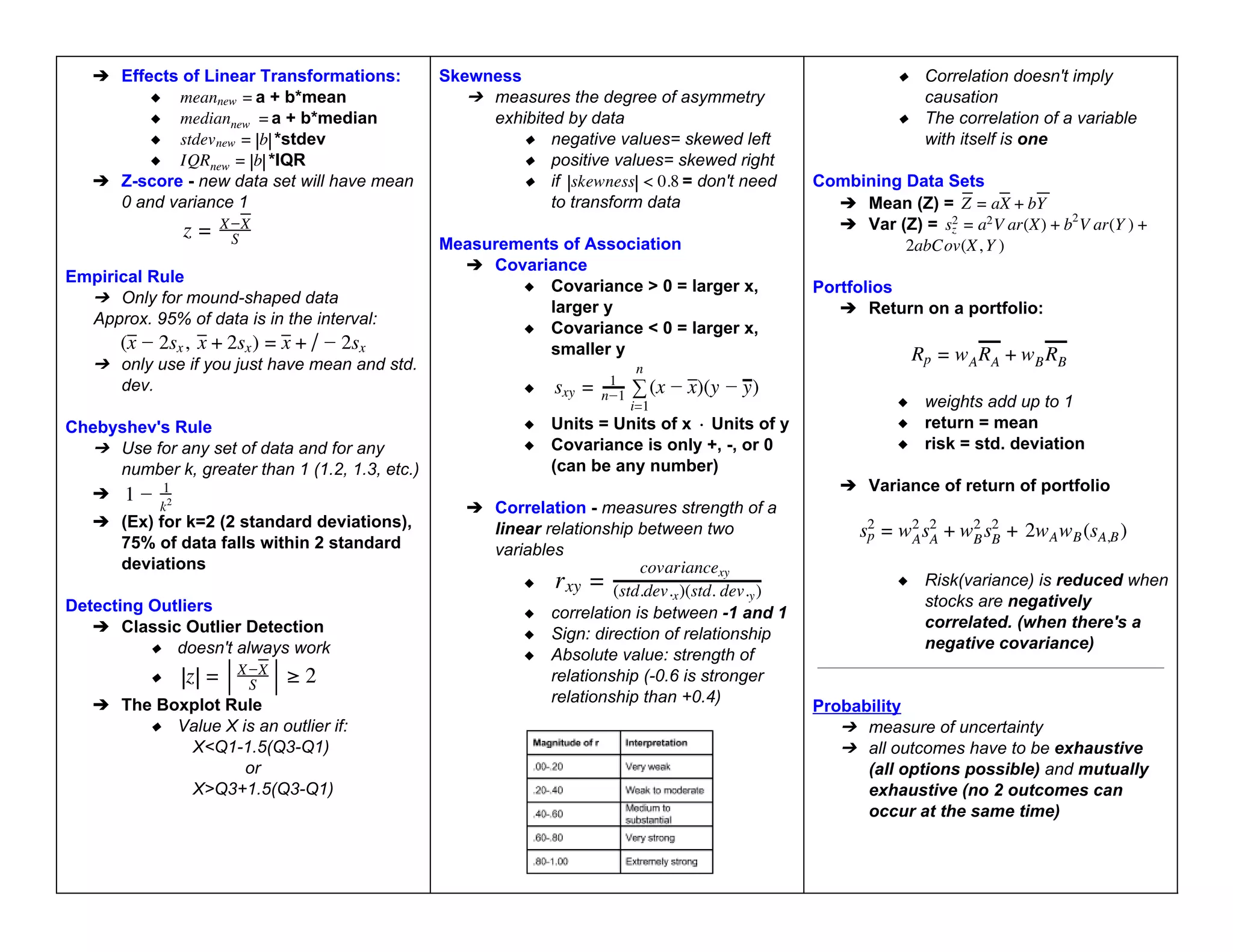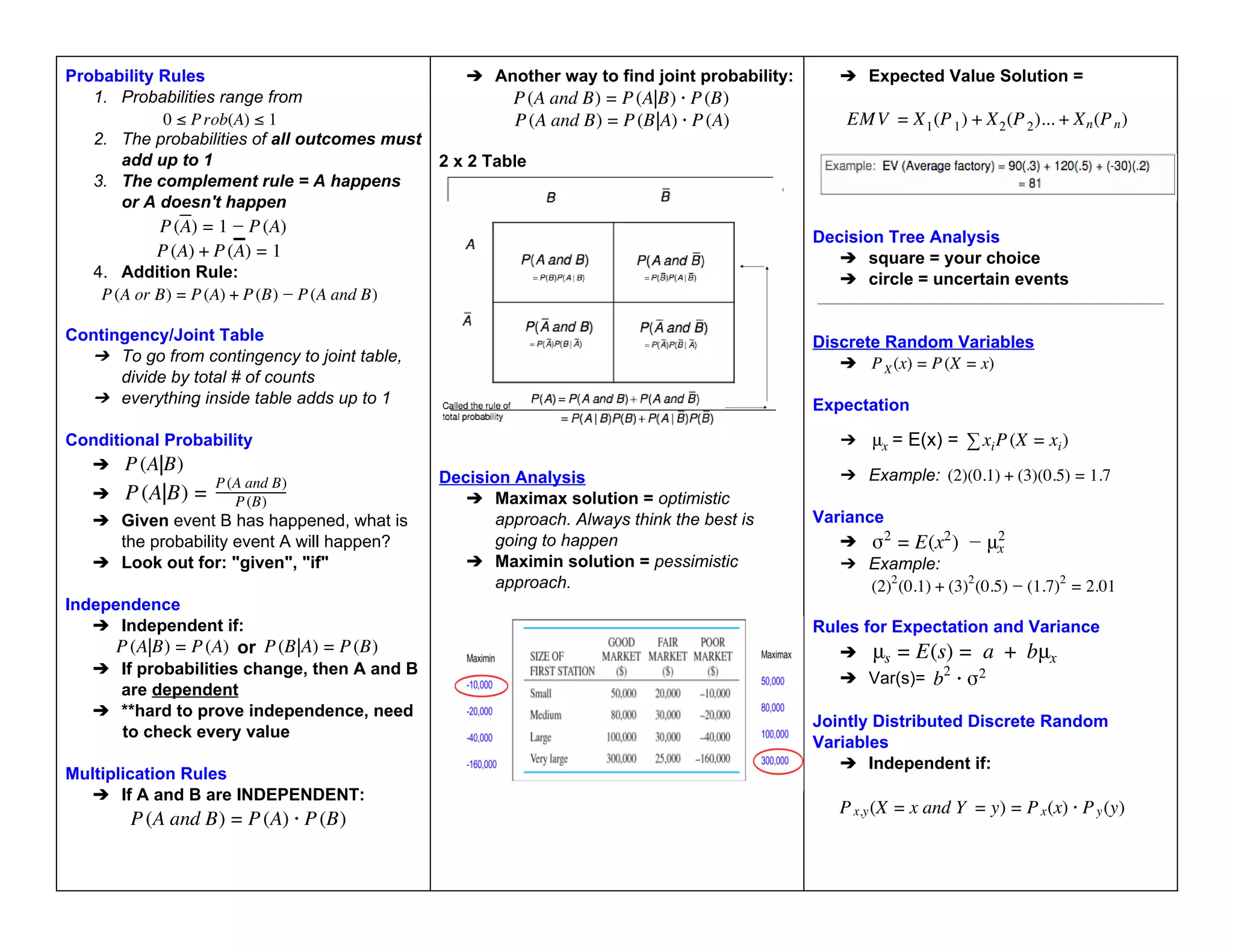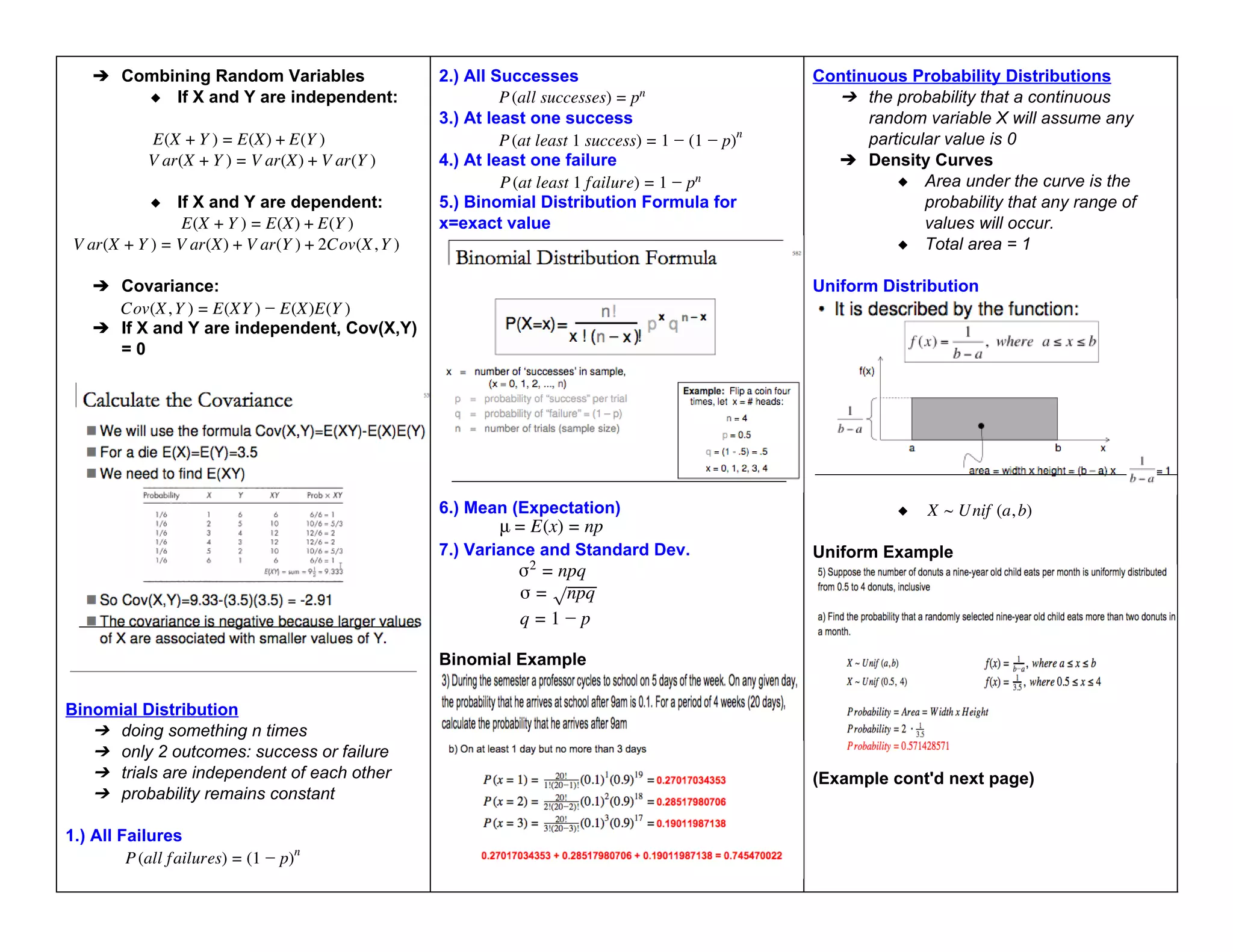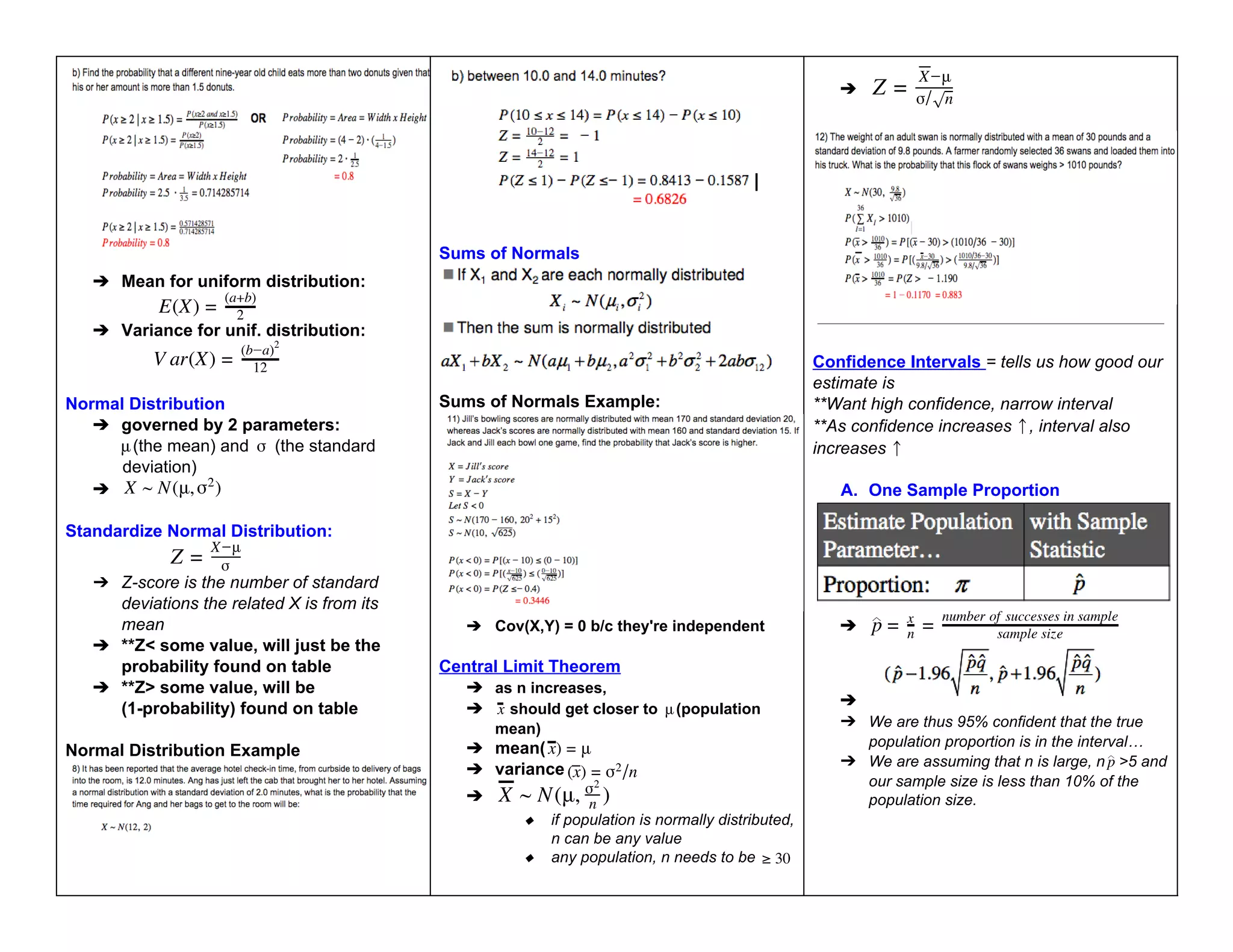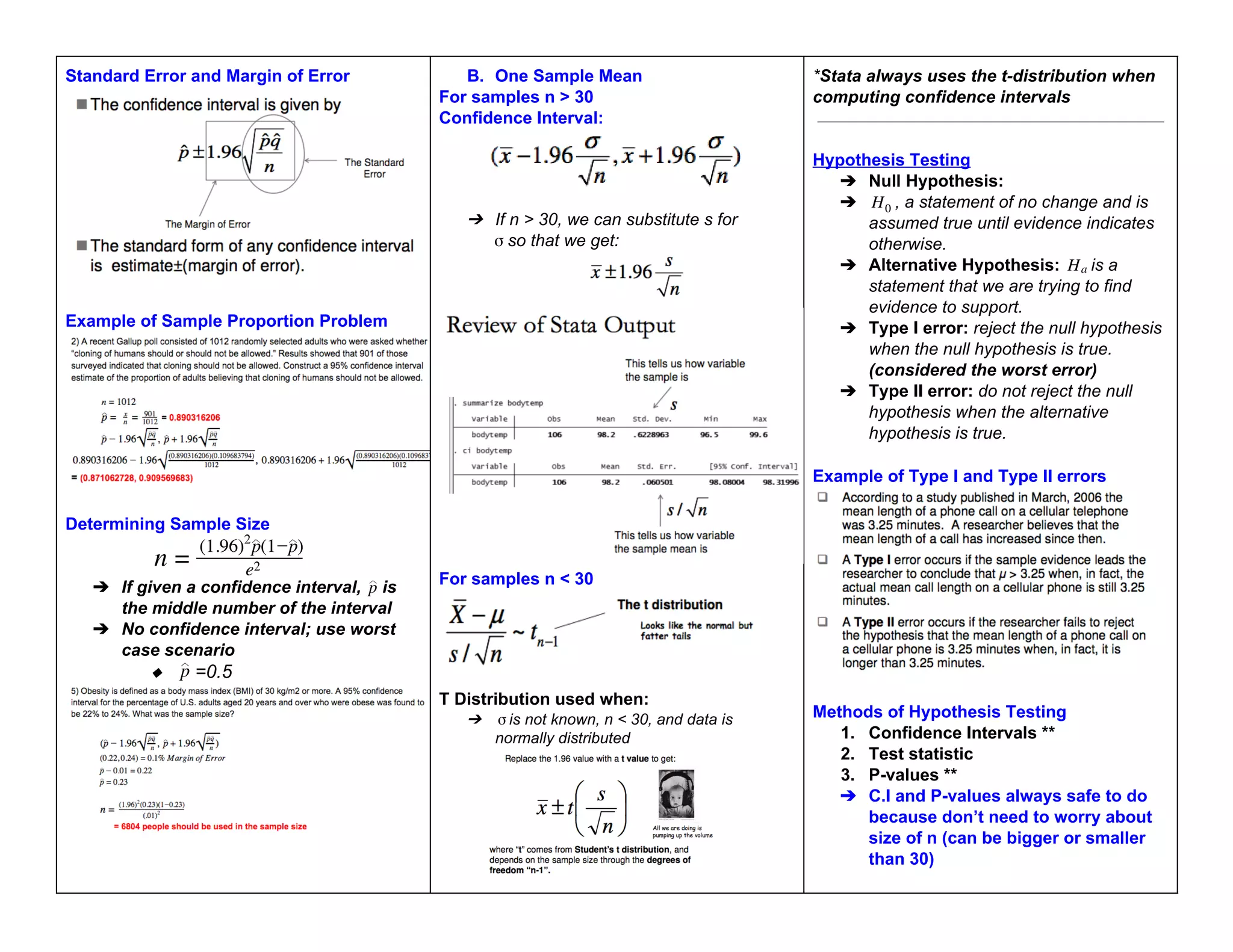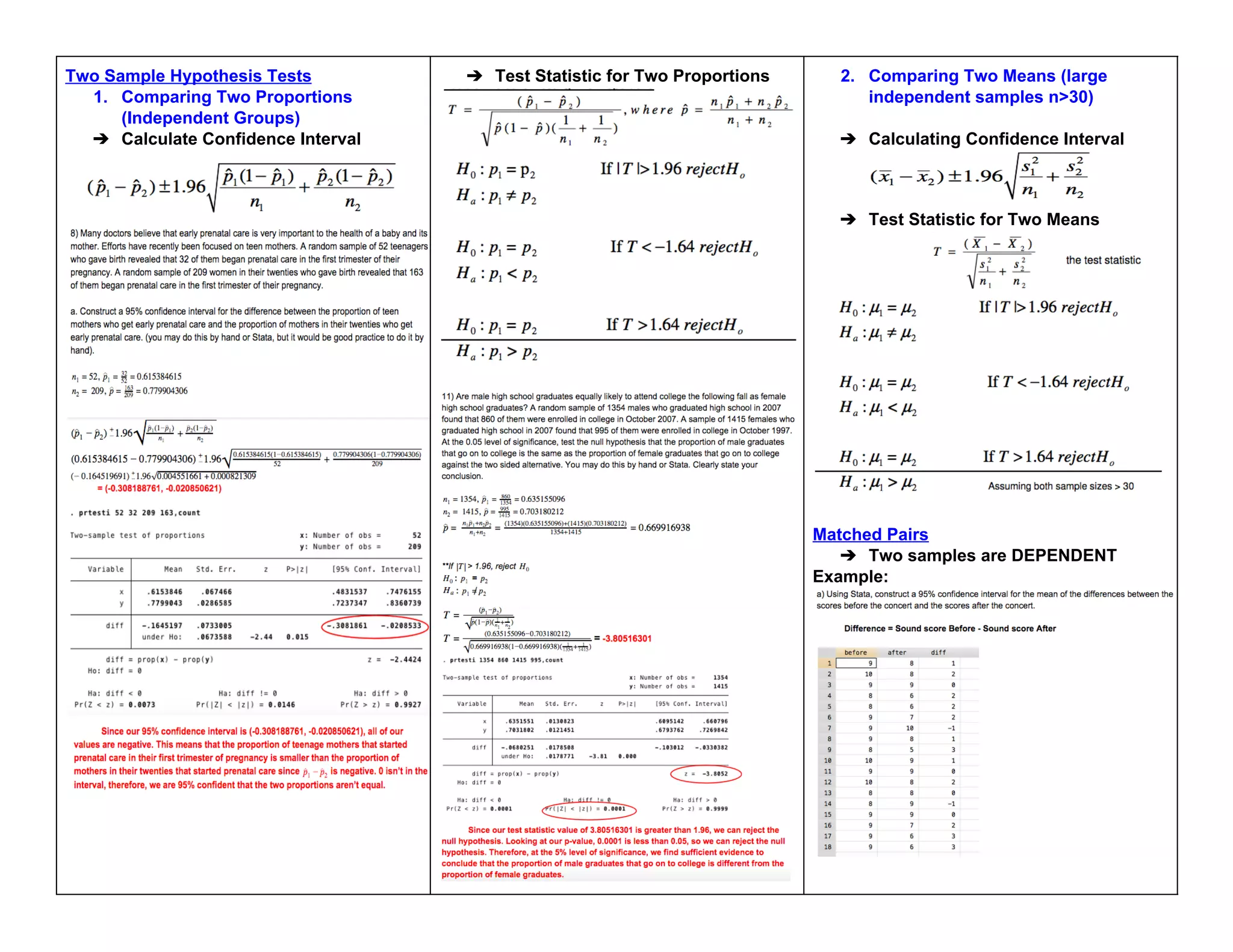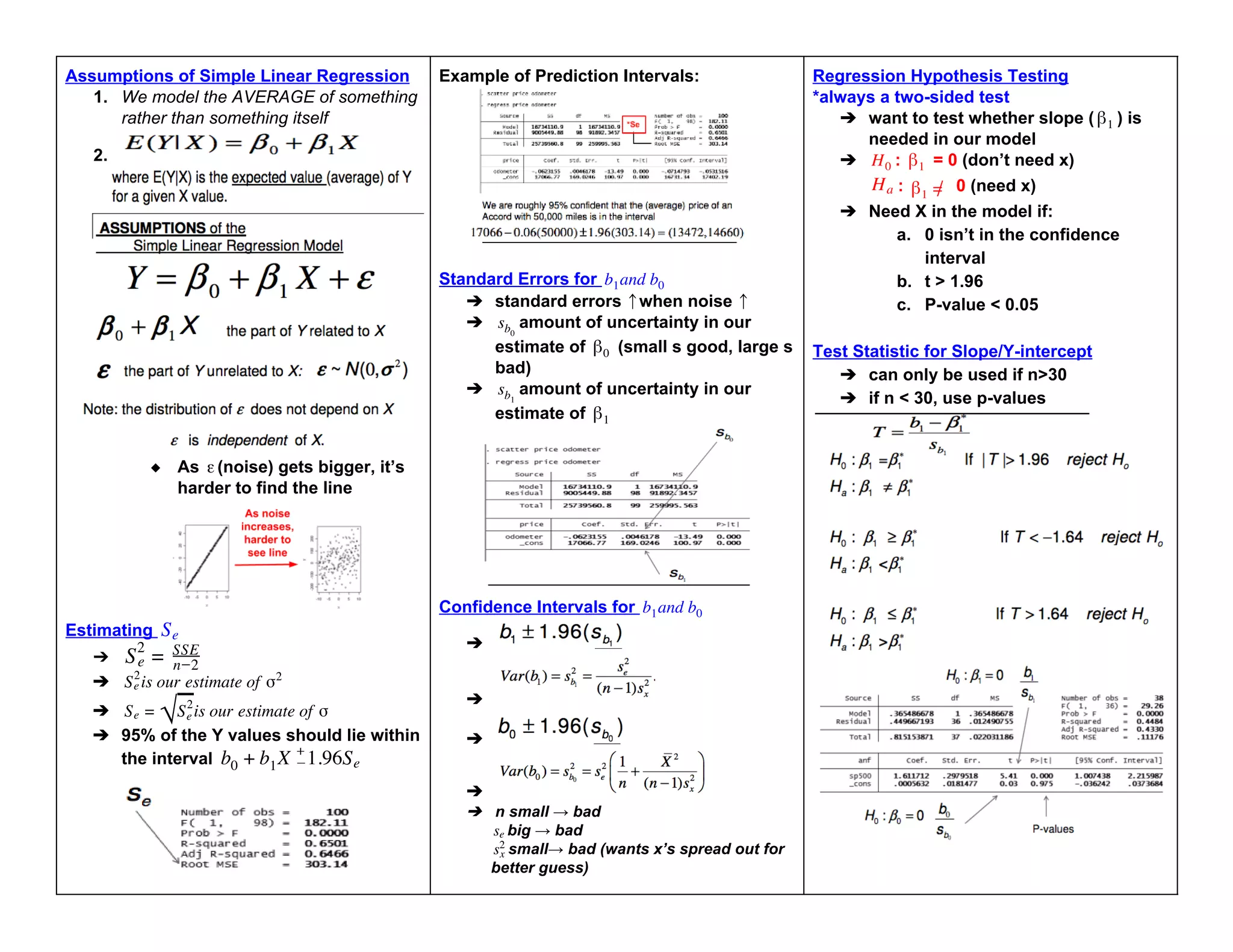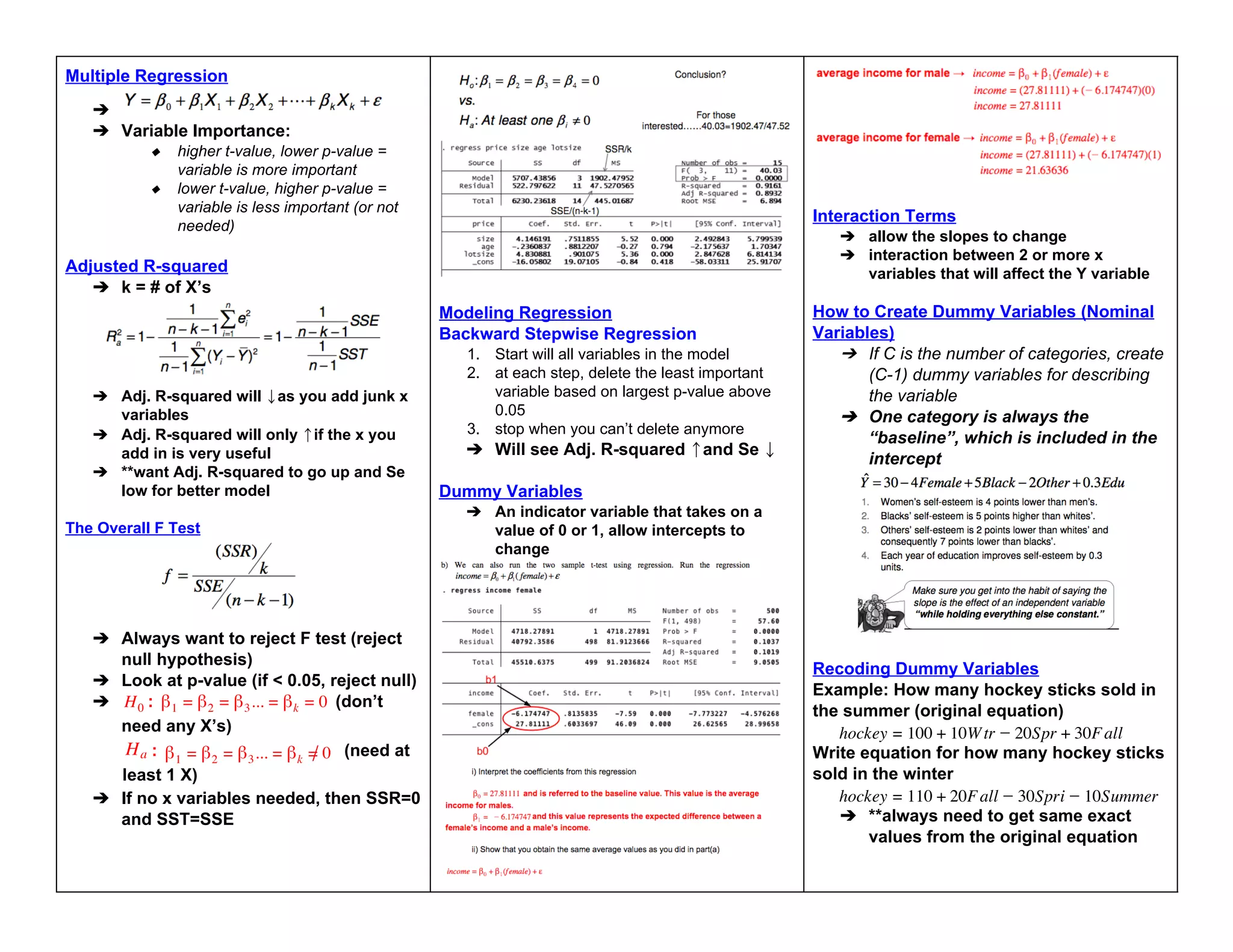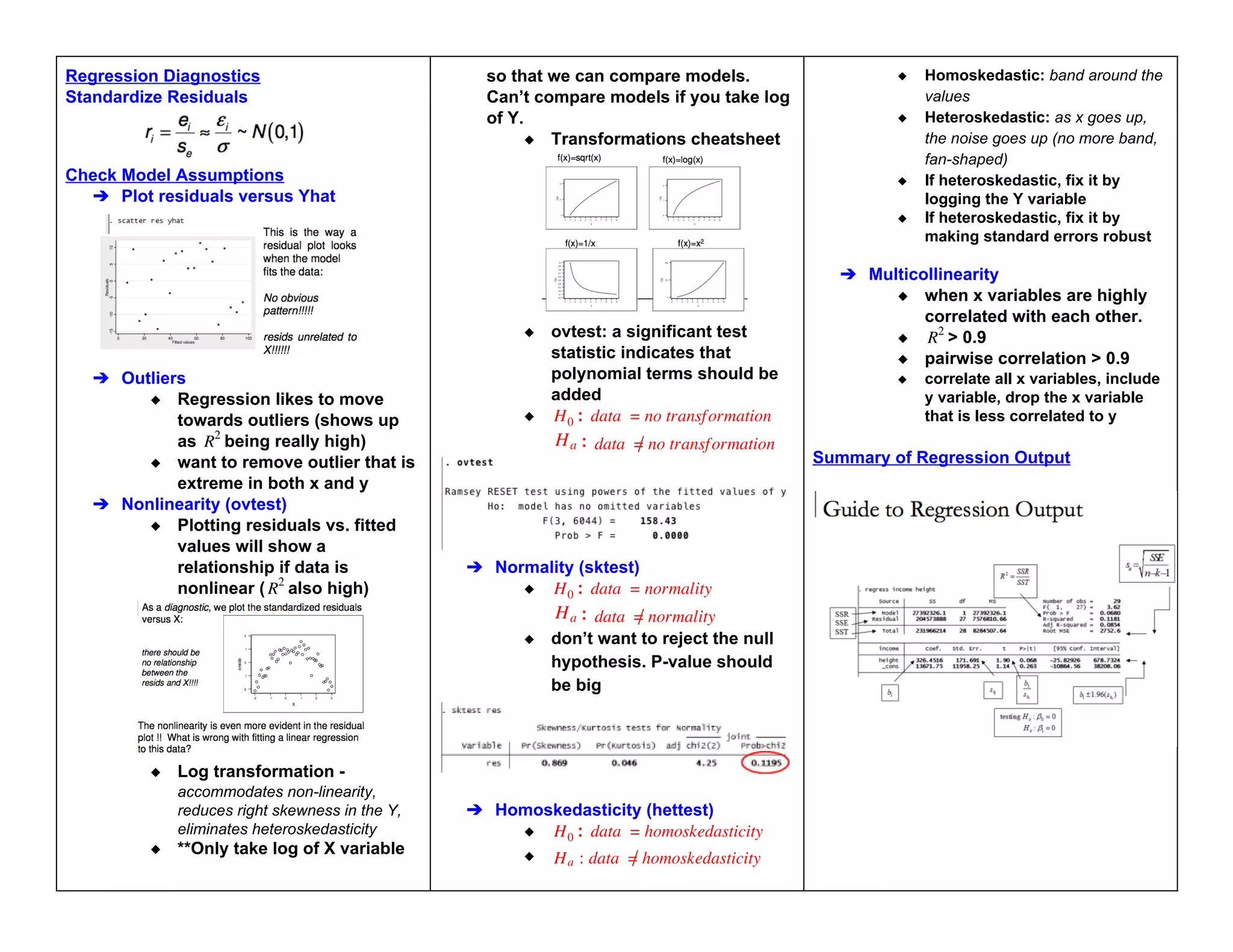This document provides an overview of key concepts in statistics and probability, including:
- Population and sample definitions and sampling techniques
- Descriptive statistics such as mean, median, variance, and standard deviation
- Probability rules and concepts like independent and mutually exclusive events
- Common probability distributions like the binomial, normal, and uniform distributions
- Hypothesis testing methods using confidence intervals and p-values
- Simple linear regression to model relationships between variables
The document covers a wide range of foundational statistical topics in a detailed yet accessible manner.
![Population entire collection of objects or
individuals about which information is desired.
➔ easier to take a sample
◆ Sample part of the population
that is selected for analysis
◆ Watch out for:
● Limited sample size that
might not be
representative of
population
◆ Simple Random Sampling
Every possible sample of a certain
size has the same chance of being
selected
Observational Study there can always be
lurking variables affecting results
➔ i.e, strong positive association between
shoe size and intelligence for boys
➔ **should never show causation
Experimental Study lurking variables can be
controlled; can give good evidence for causation
Descriptive Statistics Part I
➔ Summary Measures
➔ Mean arithmetic average of data
values
◆ **Highly susceptible to
extreme values (outliers).
Goes towards extreme values
◆ Mean could never be larger or
smaller than max/min value but
could be the max/min value
➔ Median in an ordered array, the
median is the middle number
◆ **Not affected by extreme
values
➔ Quartiles split the ranked data into 4
equal groups
◆ Box and Whisker Plot
➔ Range = Xmaximum Xminimum
◆ Disadvantages: Ignores the
way in which data are
distributed; sensitive to outliers
➔ Interquartile Range (IQR) = 3rd
quartile 1st quartile
◆ Not used that much
◆ Not affected by outliers
➔ Variance the average distance
squared
sx
2 = n 1
(x x)
∑
n
i=1
i
2
◆ gets rid of the negative
sx
2
values
◆ units are squared
➔ Standard Deviation shows variation
about the mean
s =
√ n 1
(x x)
∑
n
i=1
i
2
◆ highly affected by outliers
◆ has same units as original
data
◆ finance = horrible measure of
risk (trampoline example)
Descriptive Statistics Part II
Linear Transformations
➔ Linear transformations change the
center and spread of data
➔ ar(a X) V ar(X)
V + b = b2
➔ Average(a+bX) = a+b[Average(X)]
STAT 100 Final Cheat Sheets - Harvard University](https://image.slidesharecdn.com/statisticssummary1634533932-230404090859-a883a793/75/Statistics_summary_1634533932-pdf-1-2048.jpg)
